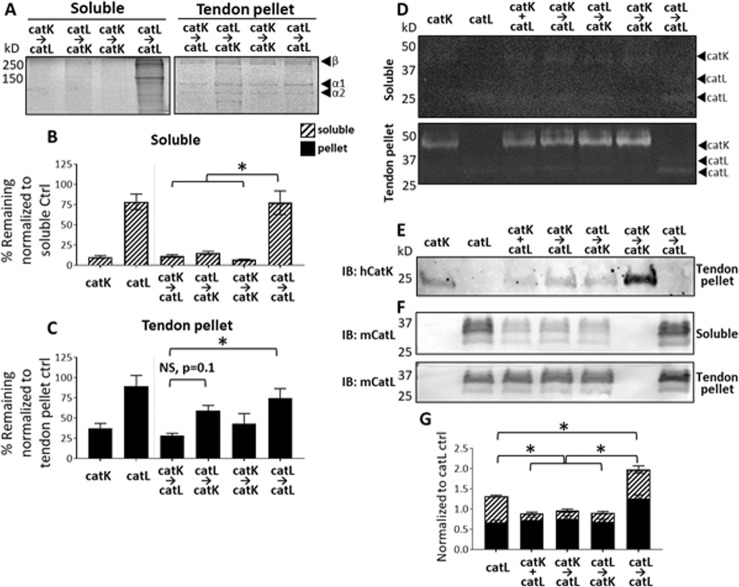Figure 4.
CatK as primary or secondary protease in sequential co-incubation causes higher tendon ECM degradation even during catL on catK cannibalistic interactions. Tendon ECM degradation and active catK and catL were evaluated after sequential co-incubations with either catK or catL as the primary protease. SDS-PAGE showed that catK was necessary for significant degradation of released (soluble) tendon ECM fragments (A,C) but sequential catK → catL was responsible for significant degradation of the tendon ECM pellet. Zymography shows amount of active cathepsins in the soluble fraction, and the active cathepsins that remained associated with the tendon ECM pellet. (D) Immunoblots for catK detected its presence in pellet fraction with less catK remaining in the presence of catL either concurrently or sequentially added. (E) Immunoblots for catL showed that incubation conditions with catK did not affect amounts of catL protein in the tendon ECM pellet fraction, but significantly less catL was present in the soluble fraction when catL was co-incubated with catK. (F,G) n = 3, *indicates statistical significance, p < 0.05 as determined by a one-way ANOVA. Error bars represent SEM.

